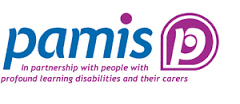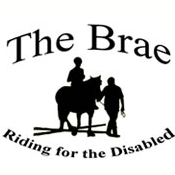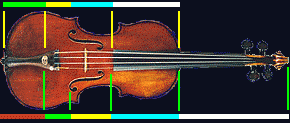Some of the first pieces of work that I did at PAMIS was looking into multi-sensory stories. I knew that I was going to be creating one later in my placement so I wanted to understand why multi-sensory stories were created.
Multi-sensory stories are short stories of just a few lines that are brought to life through a selection of meaningful sensory experiences. They are extremely beneficial for students with Sensory Processing Disorder (SPD, profound and multiple learning difficulties (PMLD), autism spectrum disorder (ASD) and other special educational needs (SEN). These stories open new ways of communication for these children as well as introduce new ways to learn (Grace,2015). Sensory stories help children with profound disabilities cope with sensitive issues that may crop up in their lives (Young et al, 2011). The stories that PAMIS have range from experiences like transitioning from primary to secondary or going to the dentist. However, some of the stories are just stories that can be told for fun such as fairytales. These stories can bring families together as the other siblings can perform the stories to the child with a disability. This means that it gives all the children something to do and brings everyone together.
A big part of my time at PAMIS was focusing on one child and her transition to secondary school. To aid in this transition PAMIS wanted to create a multi-sensory story to help explain this transition and to have something that the primary, secondary and family could perform to the child.
The first step of creating the story was attending meetings to find out what the best ideas would be for the story. When I started my placement at PAMIS, I was shown videos of multi-sensory stories being performed and I looked through some of the many stories that PAMIS have in their library. These stories are available for anyone to borrow and use that needs them.
The first stages of creating the story was attending meetings with the high school and then the primary school to find out what each school would like the story to be about and what they would like from the story. After we had spoken to both schools we had to start thinking about what sounds and sensory items we wanted in the story. At the high school one of theteachers had said that his signifier to K was going to be his beard. If we could find a good replication of a beard we wanted to re-create this for the story. After visiting both schools and meeting K we went back to the high school to record some sounds that K would encounter that were different from what she hears in her typical school day currently.
One of the main concerns that the primary school had was that the noise of the other children in the school would bother K. The department that K would be in for most of her day was relatively quiet as we had had a tour of it when we had been there previously. However, we took their concerns on board and recorded the sounds of the children at the nosiest part of the school. Other different sounds that K would never have heard before is the sound of the school bell at the secondary school; the sound of another child’s electronic wheelchair; the sound of the electronic doors that K would come into the school through and the voices of each teacher that would be working with K. We recorded several sounds so that when it came to writing the
story we had more than enough different sounds to incorporate into it. Recording these sounds looks a while as we had to wait for the correct moment to record some of them as well as go around the school to get each teacher that would be working with K.
We used talking tiles to record the different sounds. These were little switches that K can press herself to hear the sound in the story.
After we had of the sounds recorded, the next stage was to write the story. When we had discussed the story with the primary and secondary school we had been asked if we could incorporate a song/jingle as K loves music and she really tunes into songs and
music when she hears them. K also enjoys shaking bells or a maraca so we wanted to have a part of the song that K could do this. As well as this it was also suggested to have a repetitive line throughout the story. Writing the story was not too difficult as we knew that it was going to follow what K would do on the days that she going to the secondary school. Writing the song was a little trickier but Max came up with some catchy limerick style songs that worked well with the story.
The next stage was to buy tor create the different sensory items that we had written into the story. Finding some of the items was a lot more difficult than I first anticipated it to be. It took a lot of searching online, asking friends and family and going around several different shops to find everything that we needed. For a couple of the items we needed to make the item. The most difficult item to re-create was the teacher’s beard. It took a few discussions with different people to conclude what we were going to use.
The final step was to print the story up in an A3 size and attach all the items to wipeable boards and number each one so that whoever is performing the story knows which order the boards should be in and what stage of the story each one goes along with. 
Each of the boards are numbered as pages to correlate with each line of the story.




All of the sensory items I bought for the story (we used the paintbrush bristles to recreate the teacher’s beard).
We used a torch and green tissue paper to re-create the green flashing light in the secondary school.
Velcro pads are used to attach each item to the boards so that they can be attached and unattached easily.
K has different signifiers for different rooms and places that she goes throughout her school day. we incorporated some of these into the story. The astro turf is given to K when she goes outside and the pom pom signifies the sensory room.
References
Grace, J. (2015) Sensory Stories for Children and Teens with Special Educational Needs. London and Philadelphia: Jessica Kingsley Publishers.
Young, H., Fenwick, M., Lambe, L. and Hogg, J. (2011). Multi‐sensory storytelling as an aid to assisting people with profound intellectual disabilities to cope with sensitive issues: a multiple research methods analysis of engagement and outcomes. European Journal of Special Needs Education, [online] 26(2), pp.127-142. Available at: http://www.tandfonline.com/doi/citedby/10.1080/08856257.2011.563603?scroll=top&needAccess=true (Accessed 20 Apr. 2017).





















 e of these places can be organised. This website may have things like a symbol to show certain facilities at different places, for example, a gold star to show which locations have a changing place
e of these places can be organised. This website may have things like a symbol to show certain facilities at different places, for example, a gold star to show which locations have a changing place
 take a horse 9 months to fully settle in to
take a horse 9 months to fully settle in to e smallest horse he is still a very strong pony. Boris gives rides to several smaller children. Boris has a great temperment and would often have his head over
e smallest horse he is still a very strong pony. Boris gives rides to several smaller children. Boris has a great temperment and would often have his head over











 cher that even if you had to look at the answer and then work backwards then that was okay. As long as you found how to come to the answer after working backwards. I found this useful to know as it taught me that you can come at things from different
cher that even if you had to look at the answer and then work backwards then that was okay. As long as you found how to come to the answer after working backwards. I found this useful to know as it taught me that you can come at things from different










 he Golden Ratio is 1.61803398875. If you take any of the numbers in the Fibonacci sequence and divide the bigger one by the smaller one you will always get close to the Golden Ratio. If I take 34 and 21, the result is 1.61904 which is the Golden Ratio! The Golden Ratio can be found in several buildings throughout history though there is no evidence whether these buildings were built purposely using this ratio. Buildings that are an example of this are Notre Dame, Taj Mahal, the Parthenon in Greece and even the Egyptian Pyramids.
he Golden Ratio is 1.61803398875. If you take any of the numbers in the Fibonacci sequence and divide the bigger one by the smaller one you will always get close to the Golden Ratio. If I take 34 and 21, the result is 1.61904 which is the Golden Ratio! The Golden Ratio can be found in several buildings throughout history though there is no evidence whether these buildings were built purposely using this ratio. Buildings that are an example of this are Notre Dame, Taj Mahal, the Parthenon in Greece and even the Egyptian Pyramids.



